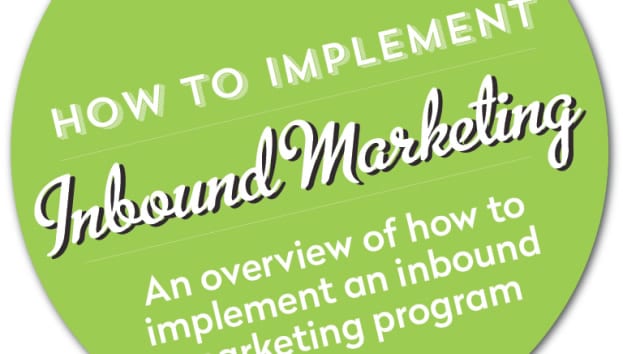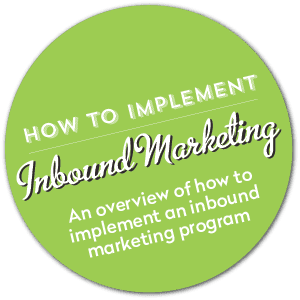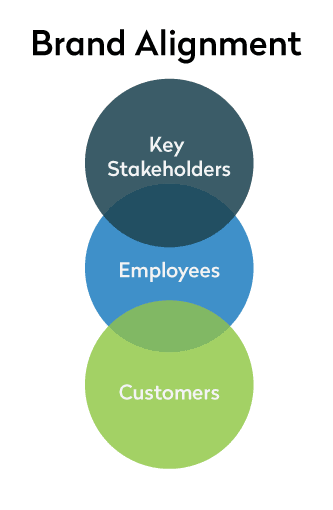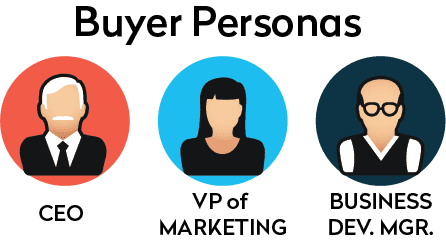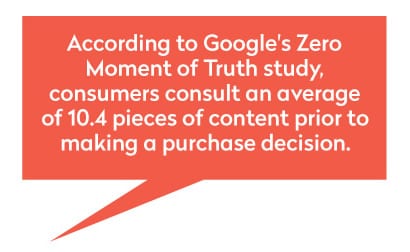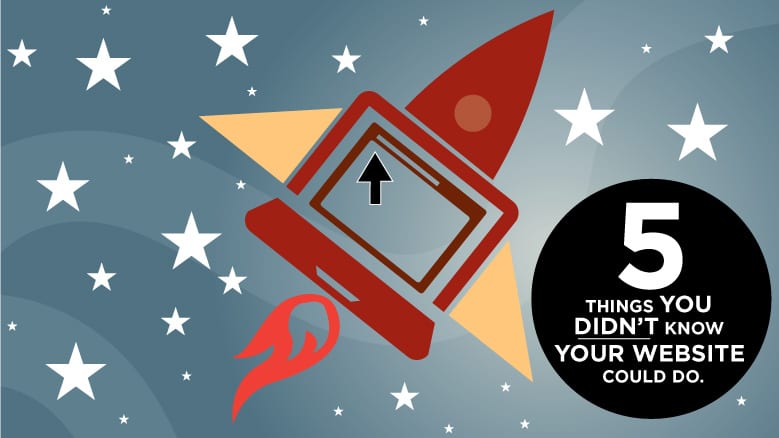
Perhaps one of the biggest mistakes most marketers and business owners make is that they overlook their website’s true potential. We know that a website is a necessity to do business. We know how our site should function and what kind of information it needs to contain. But a lot of times we don’t quite grasp the importance of how—that with a few changes—our company’s website could be modified to work harder for our businesses.
Below are 5 things you didn’t know your website could do. More than a pretty face —your website has much more potential than you think.
1. Make you look bigger than you are
If you’re a smaller business looking to attract big clients, your website is the first step. In today’s digital world, impression and trust is everything. A website can communicate your brand’s unique message and connect with your prospect. Microsoft Research reports that people spend only 10 seconds on your homepage before leaving if they don’t immediately connect with your marketing messages. With the aid of professional website design and targeted and clear messaging, you can present your company as a reliable, professional partner that keeps your visitors on your website longer.
2. Generate revenue
Through methods like blogging, social media, CTA’s (call-to-actions), premium offers and landing pages you can essentially create a completely new revenue channel to grow your business. This process, termed “inbound marketing” is a method that attracts, converts, closes and delights customers to grow your business online. This methodology is proven in the digital age and can significantly affect your bottom line. Consider these following statistics:
- According to Social Media B2B, B2B companies that blog generate 67% more leads per month than those that don’t.
- The Content Marketing Institute reports that 8 out of 10 people identify themselves as blog readers, and 23% of all time spent online is spent on social media sites.
- ContentPlus published that blogs give websites 434% more indexed pages and 97% more indexed links.
- Search Engine Land shares that up to 80% of people ignore Google-sponsored ads.
- HubSpot’s research shows that 75% of users never scroll past the first page of search results.
These trends show that one way to grow or market your business more effectively is by utilizing an inbound methodology as a way to increase traffic, leads and convert visitors to customers. When these mechanisms are in place, and given time to work— your website turns into a 24/7 lead generator.
3. Build your brand
With the right content marketing tactics, you also can build your brand locally and nationally quicker than traditional advertising and marketing methods. Unless you have 20 million for a national ad campaign to spend, inbound marketing costs 62% less per lead than traditional marketing. 54% more leads are generated by inbound than outbound or traditional advertising and marketing methods. If you are able to generate relevant content that solves your customer problems—and do that consistently, your brand will begin to take root in the minds of your customers.
4. Attract talent
90% of all online applicants will visit a company’s careers page. Data suggests that just because you have a strong corporate brand, doesn’t necessarily mean it translates into a strong employer brand. Websites that have a video that showcases their company’s values and culture will receive more applicants than a company who doesn’t. (SOURCE: LinkedIn Employer Handbook. December 1, 2012) With a strong careers page, your chances of attracting top-tier talent increases.
5. Connect your brand to your customer
Having a professional website design created with your customer or buyer persona in mind can allow you to connect your brand to your customer more effectively than traditional push marketing can. By utilizing your website as the cornerstone in your social media activities you can drive traffic from social networking sites like Facebook, Google+, Twitter and Pinterest that connects your brand to your customers that creates real affinity and preference.
In conclusion, your website may not be able to cure world hunger or create peace in the middle east, but it can make you look bigger than you are, generate revenue, build your brand, attract talent and connect your brand to your customer. By adopting an inbound marketing methodology, you can turn your website into revenue generating machine and a valuable and effective marketing tool.
If you need help or have questions on how to make your website work harder for you, please contact us.




